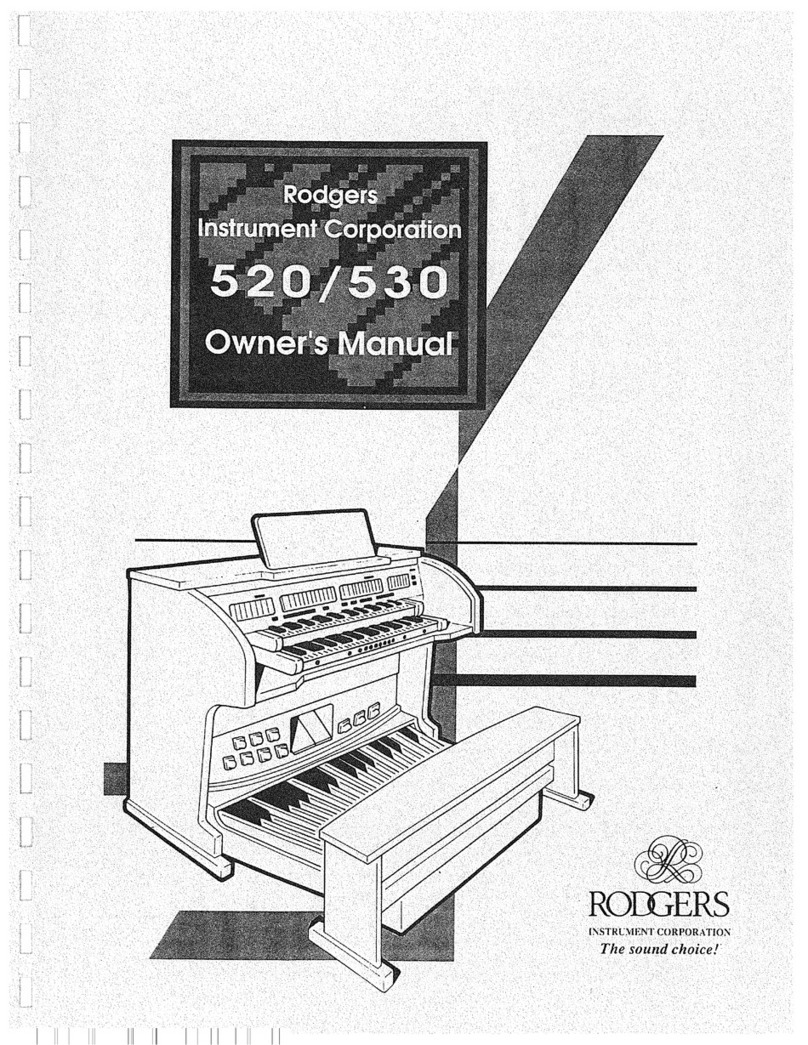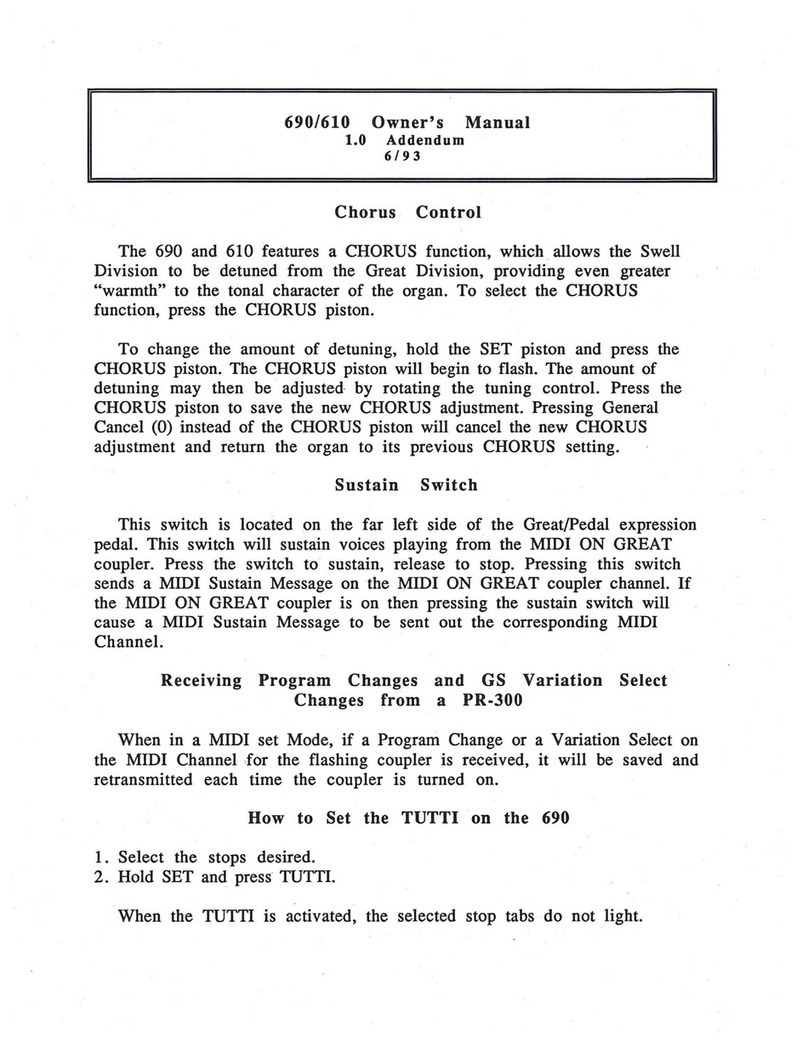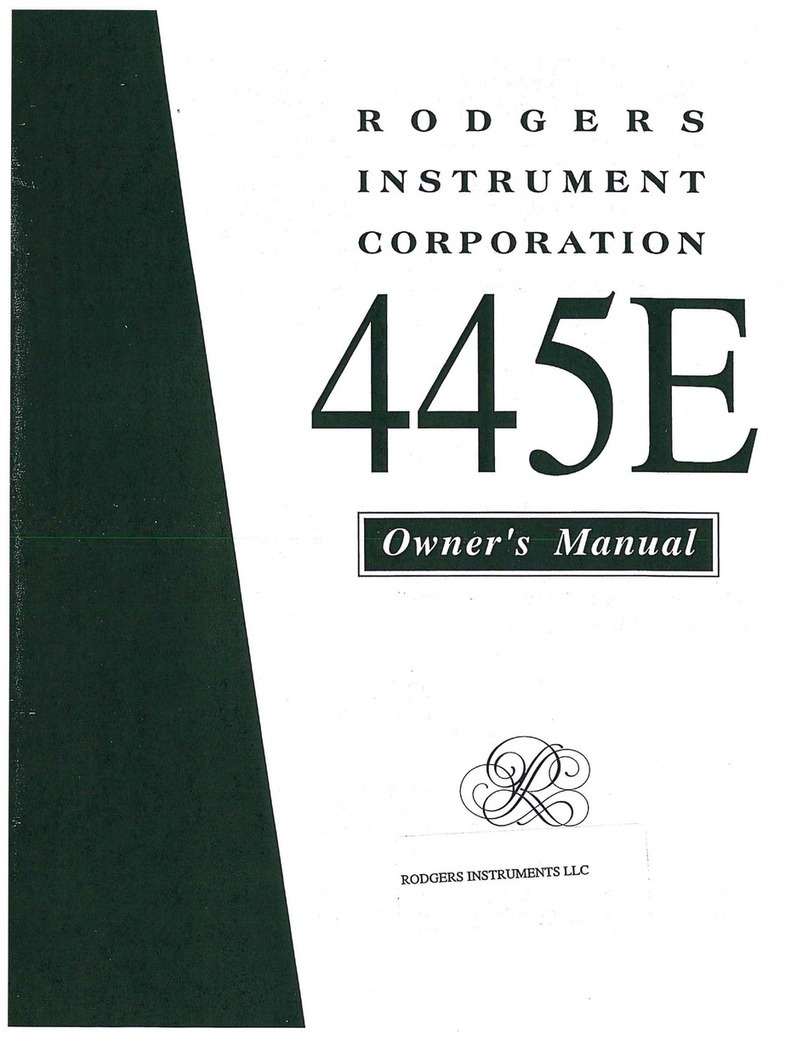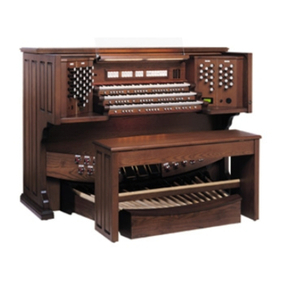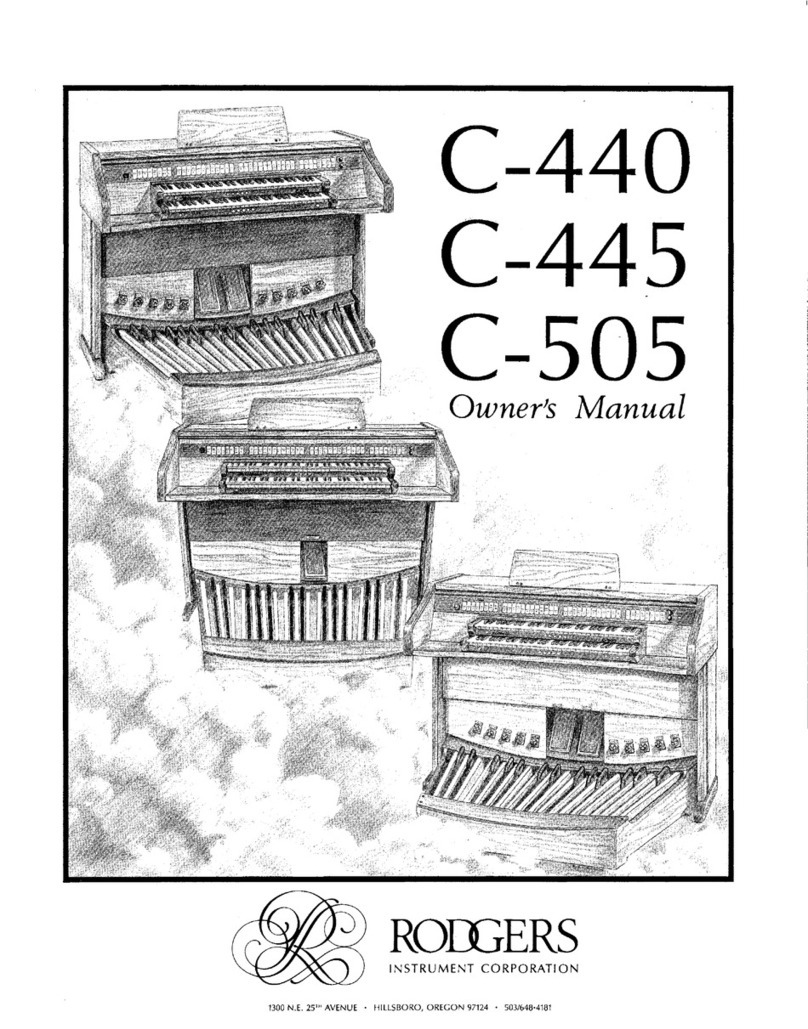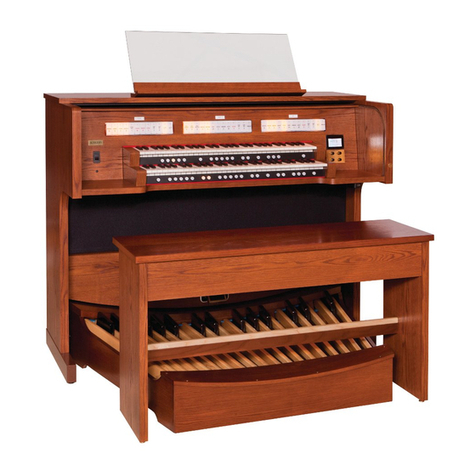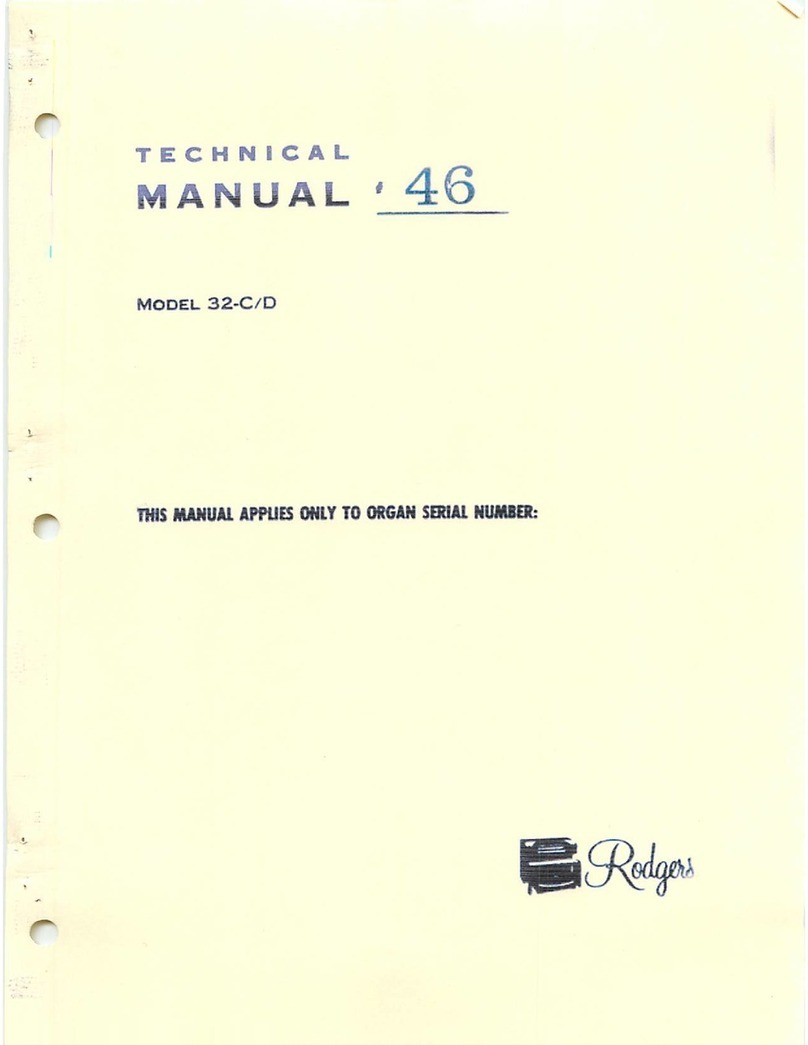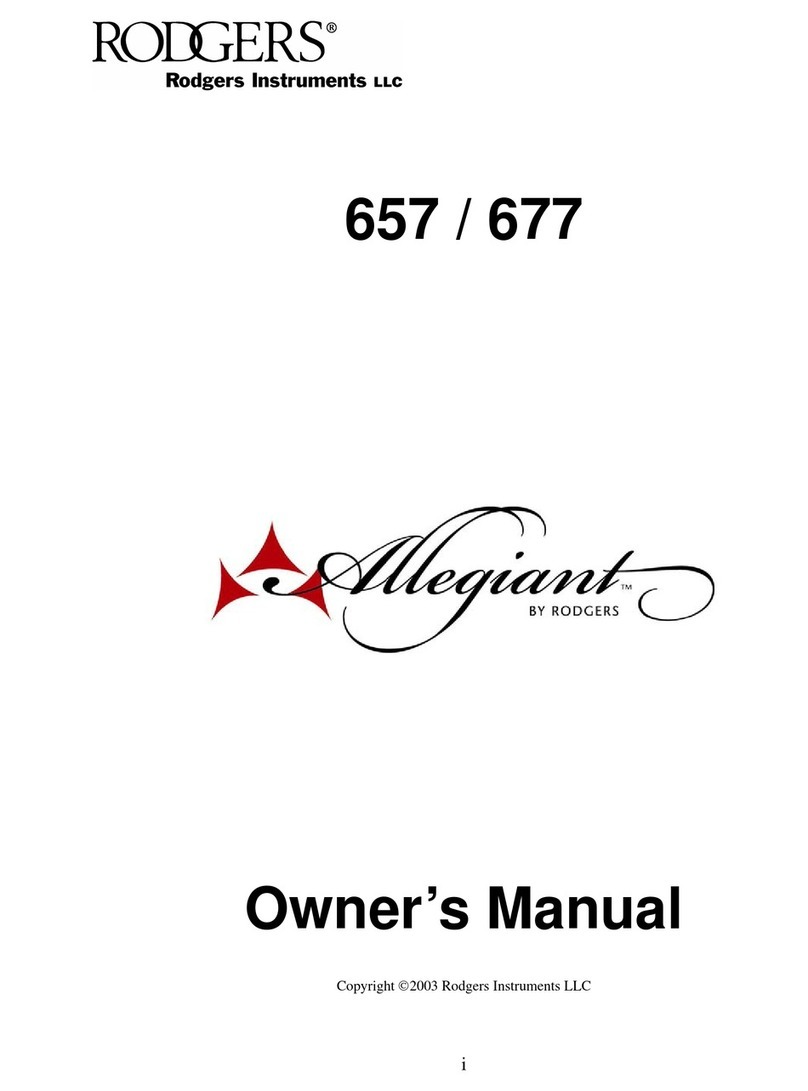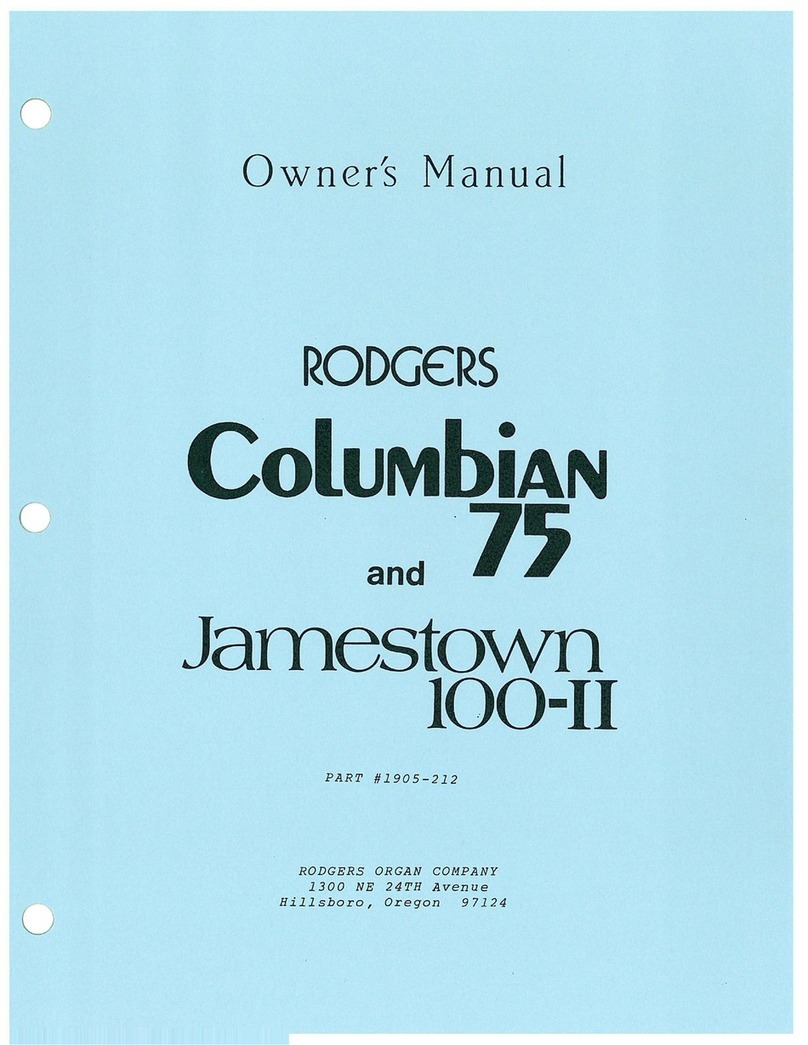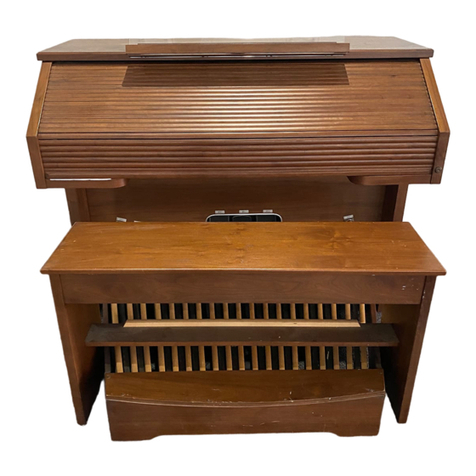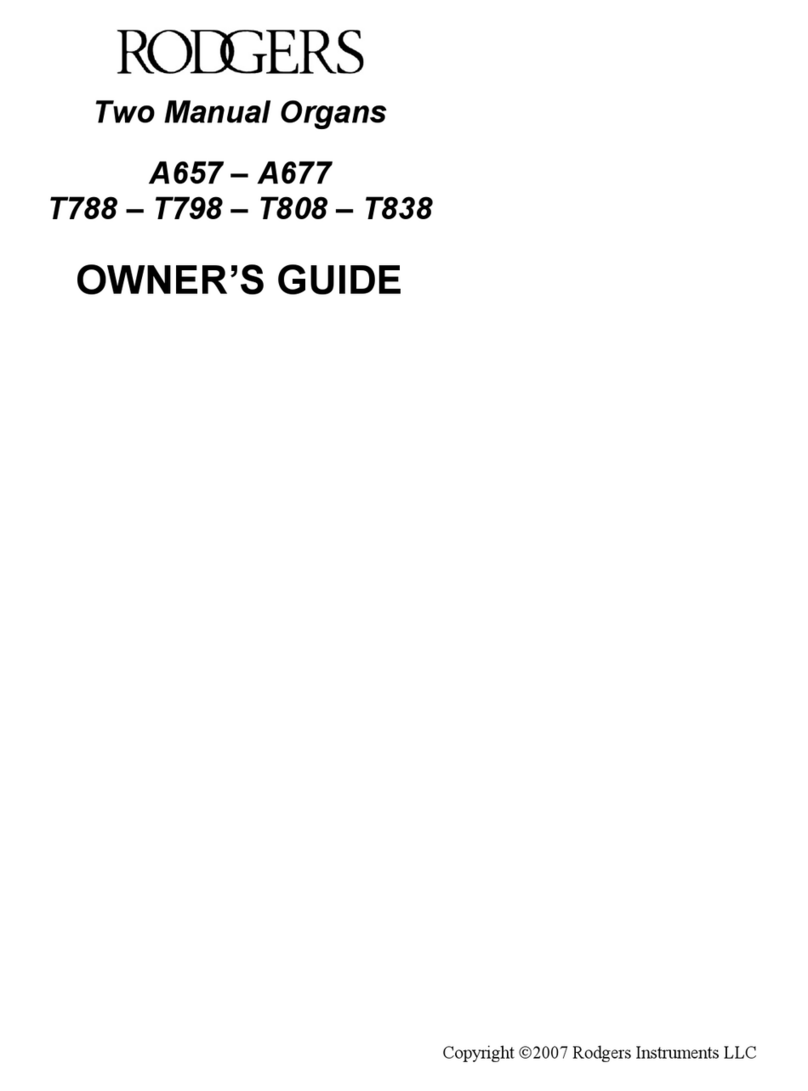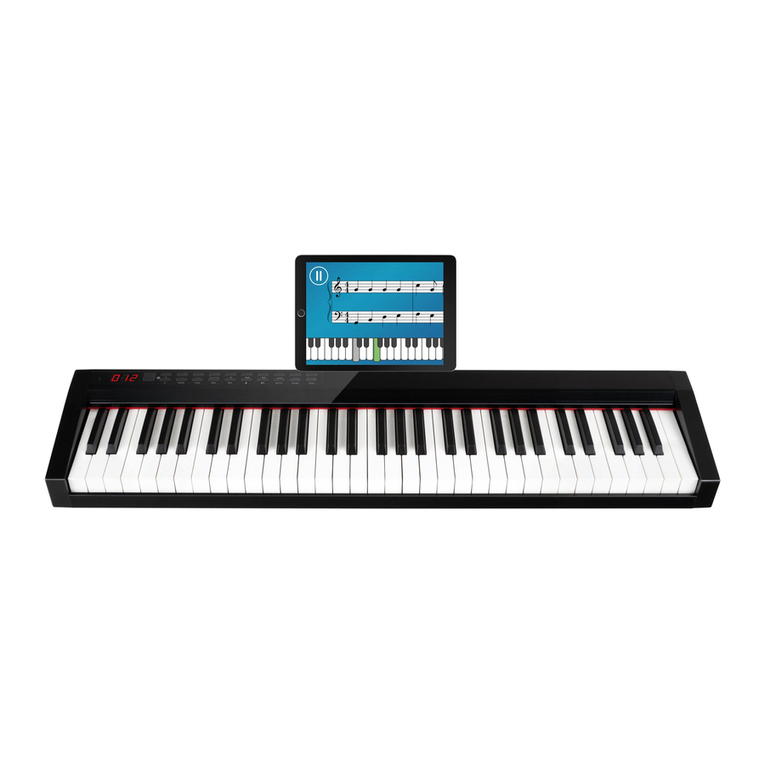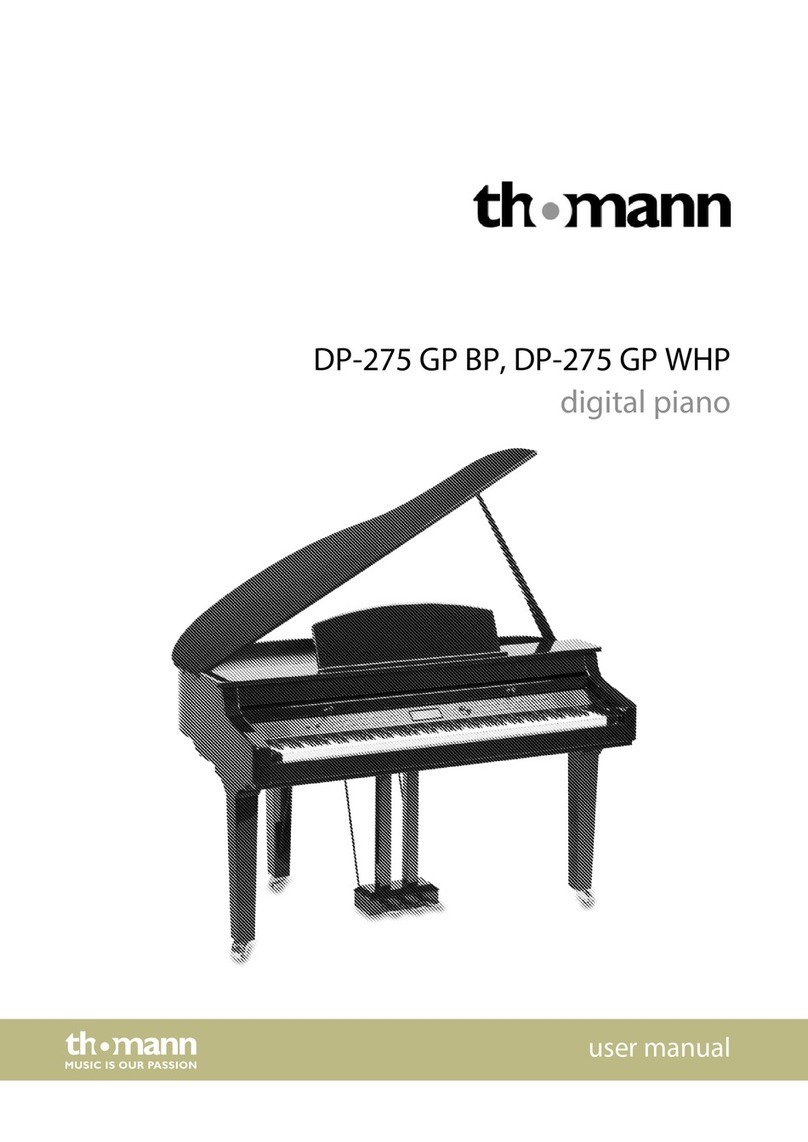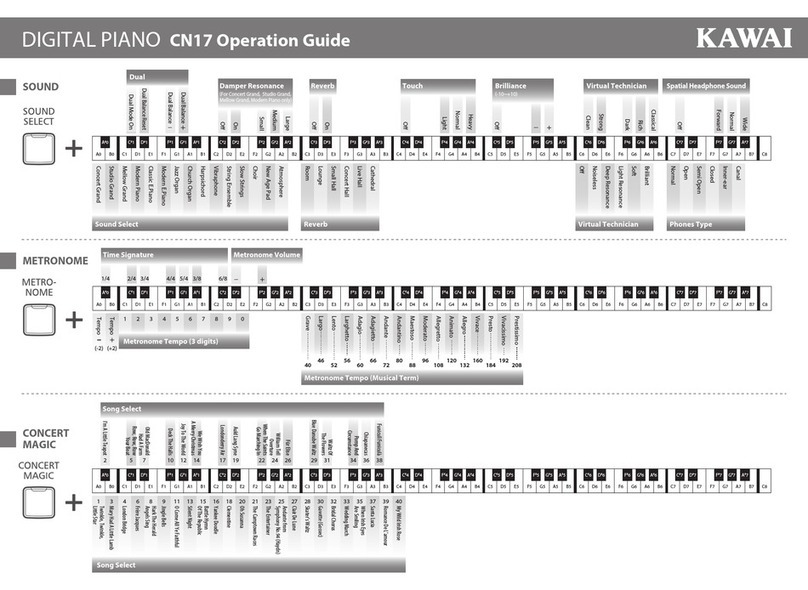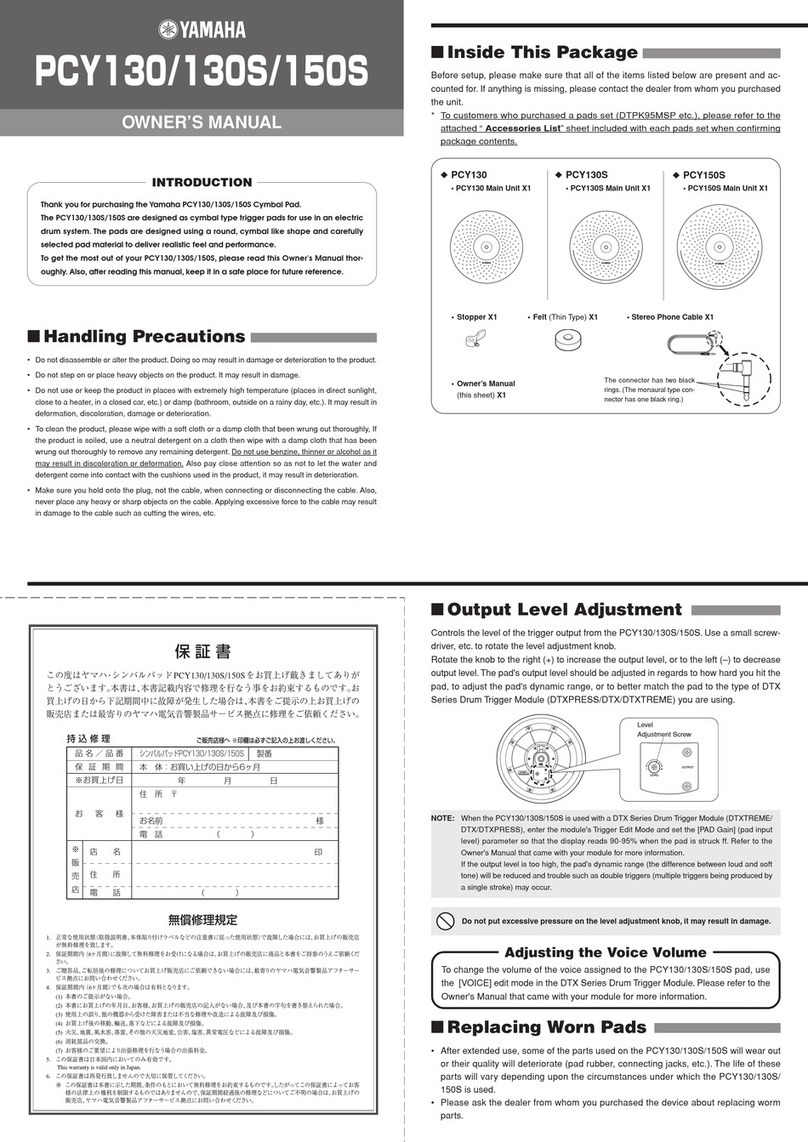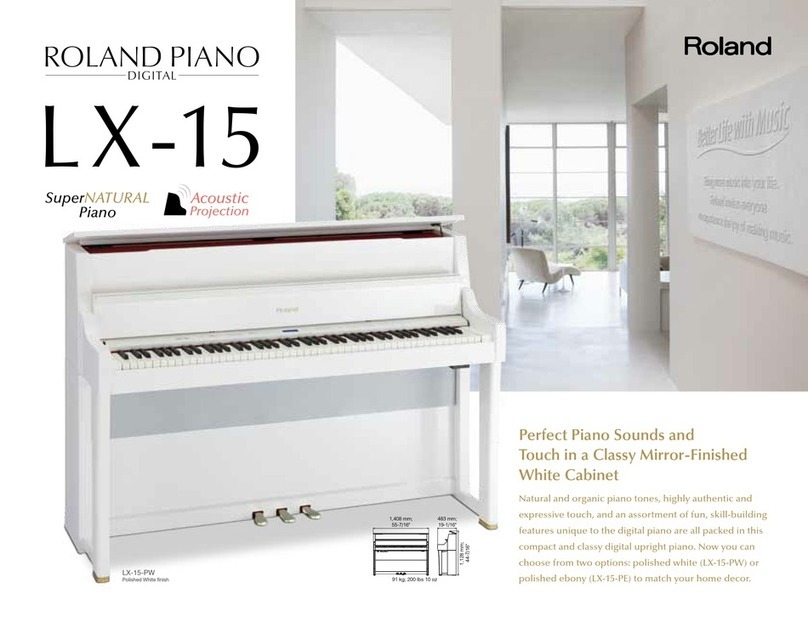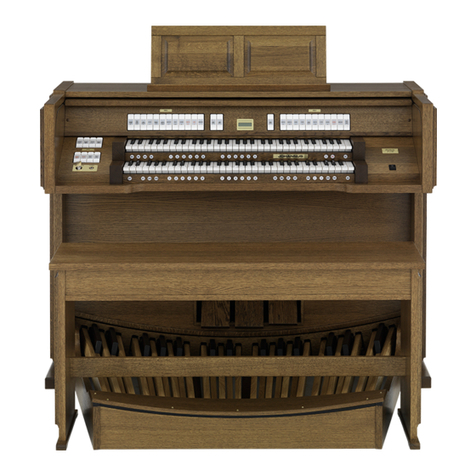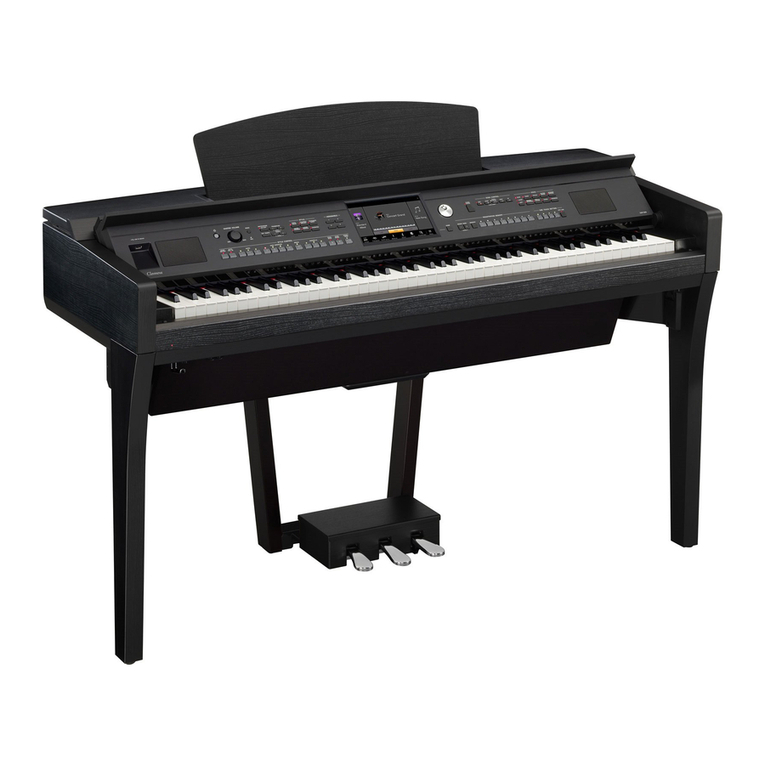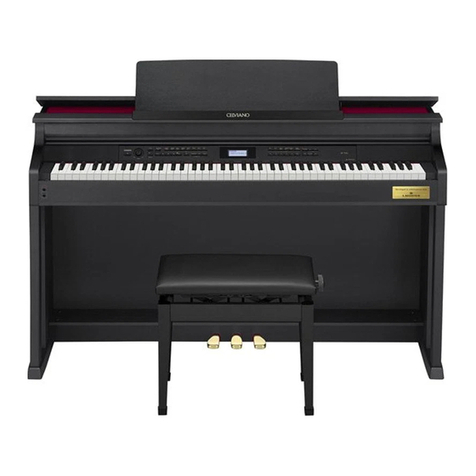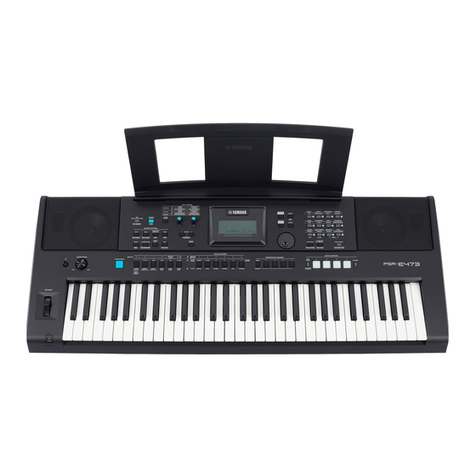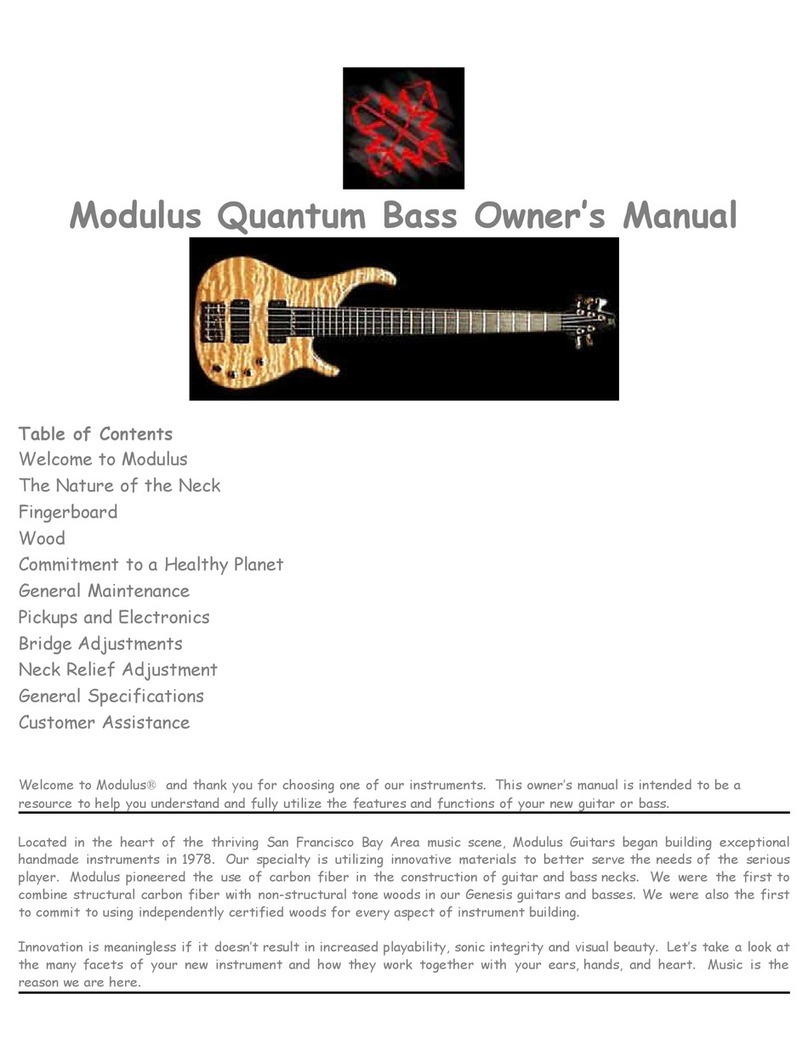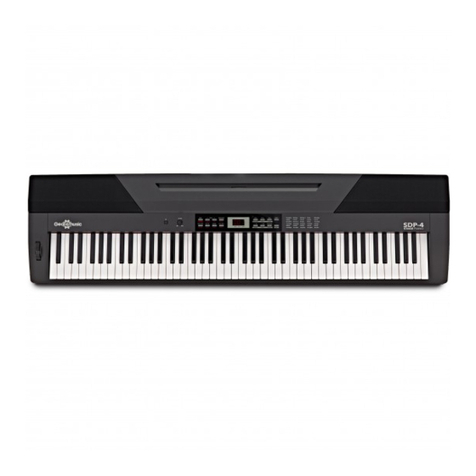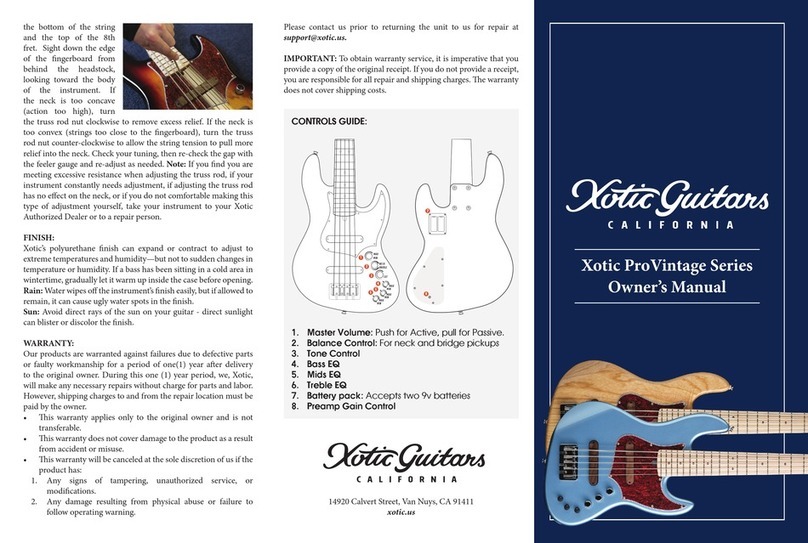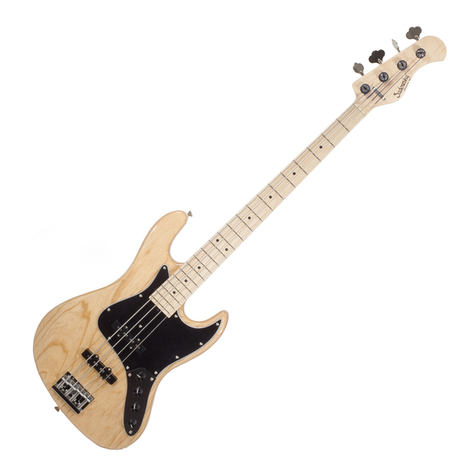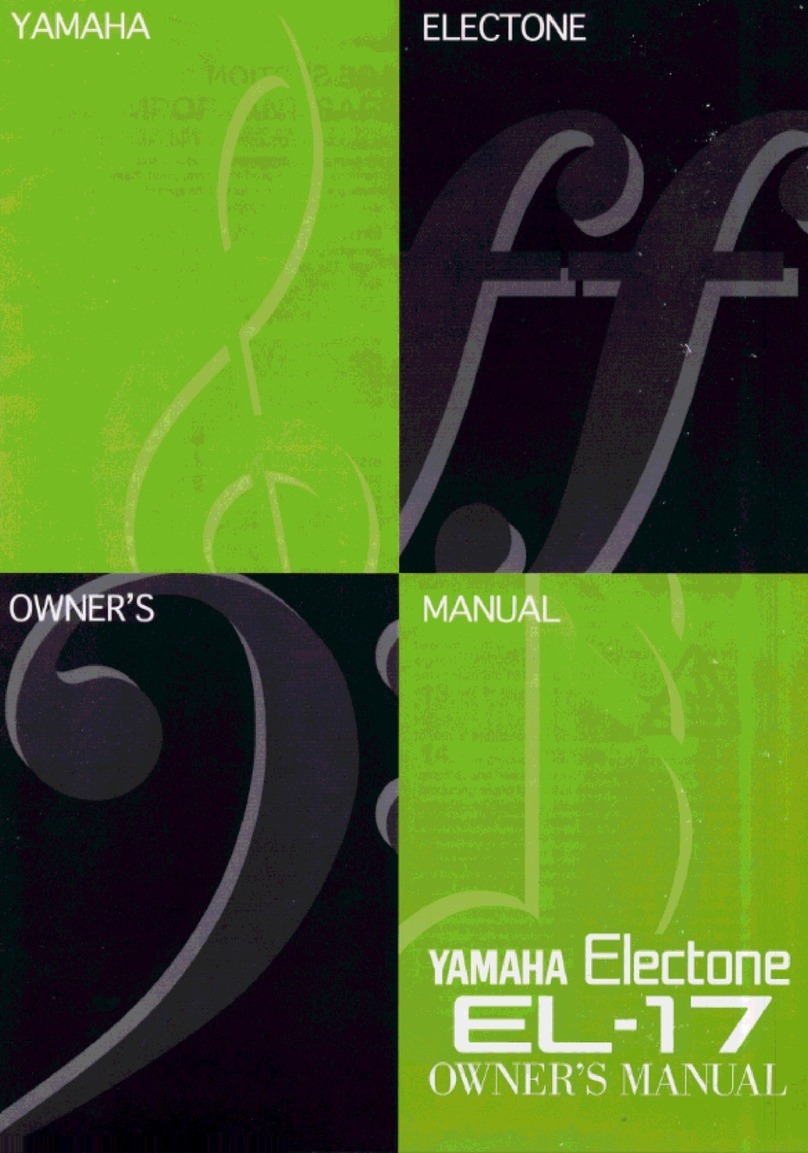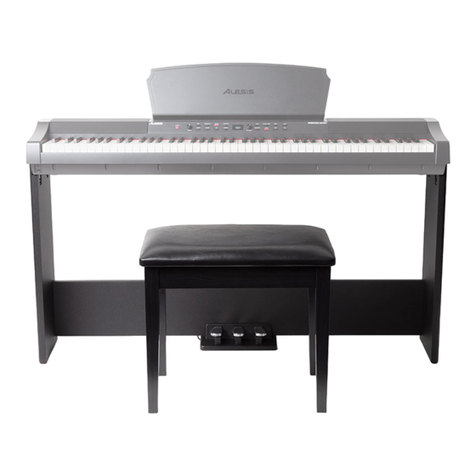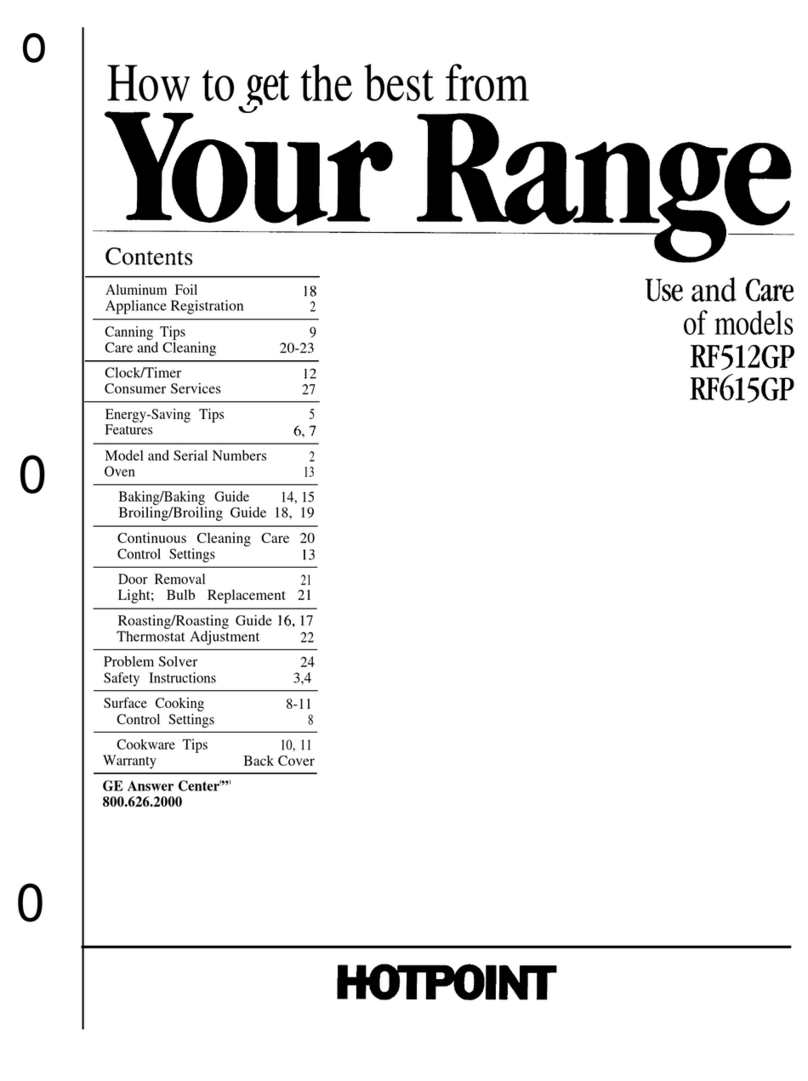
MODEL
TONE
CABINETS
The minimum
tone
cabinet
complement
for
the Rodgers
35- A
consists
of
two
Wide-Range
Tone
Cabinets
and one
Extended
Low-Frequency
Pedal Cabinet. Each
Wide-Range
Cabinet
combines
cone
type
speakers
with
special high-
frequency
tweeters
. The
two
15"
speakers
in
the Pedal
Cabinet
effortlessly
reproduce
the
low
fundamental tones
of
the organ, even at high
power
levels
.
This
speaker
complement
provides
three
channels,
allow-
ing
for
voice
separation
by manual
division
and
voice
family
.
The
console
is
prepared
for
additional
channels
for
added
power
and
voice
separation
.
Amplification
is
provided
within
each Tone
Cabinet
using
high
performance
,
all-transistor
amplifiers
.
GREAT SWELL
CHOIR
8' Gemshorn
Specifications
Three
AGO
61-note
Overhanging
and
Tilted
Keyboards
AGO
32-note
Concave
and Radiating Pedal
Clav
i
er
17
-Piston
Setterboard
Combination
Action
Sforzando
Piston and Toe Stud
Baroque
Chiffon
Choir
Flutes
Air
Sound
Organ
Harp and
Carillon
Independent
Celestes
on Swell and
Choir
Diapason
, Flute,
String
, and Reed
Voices
Full
Complement
of
Standard
Couplers
Great
to
Pedal Reversible
Divided
Tremulants
Divided
Ex
press
ion
Illumination
for
Music
Rack,
Stop
Board
, and Pedal
Matching
Organ
Bench
Locking
Roll-Top
Console
All Tone
Generators
Contained
in
the
Console
All Rodgers
Church
Organs
Comply
with
American
Guild
of
Organists
Standards
All Rodgers Instruments are
Guaranteed
for
Five Years
CONSOLE
DIMENSIONS
Width
61%"
Depth
36,
Minimum
Floor
Area
for
Console
,
Height
51
" Pedal, and Bench:
62
"
Square
AUXILIARY
SPEAKER
SYSTEMS
Rodgers
Antiphonal
Speakers
(with
Amp
l
ifiers)
Rodgers
Outdoor
Tower
Speaker
System
PEDAL
16
' Gemshorn
8' Principal
8'
Bourdon
4'
Oct
ave
16
' Lie
blich
Gede
ck
t (Ch)
8' G
eige
n Diapason
8' Rohrfl
ot
e 8' Gemshorn
Ce
leste
8'
Gedeckt
32
'
Contr
a P
ri
ncipal
16' Principal
16
' Bourdon
C
OMBINA
TI
ON
AC
TIO
N
(Se
tt
e
rbo
ard in
Dr
a
we
r)
4-
S
we
ll P
isto
ns
4-Gr
ea
t & Pedal
Pi
sto
ns
4-
Ch
oi
r
Pi
stons
4-
Coll
ective
Mast
er
Pi
ston
s
4'
Sp
itzflote
2%'
Tw
elfth
2' Supe
ro
ctave
2'
Bloc
kflote
M
ix
ture
Ill
• 4'
Gr
eat to
Gr
eat
16
'
Swell
to
Gr
eat
8' Sw
ell
to
Gre
at
4'
Sw
ell to
Gr
eat
• 16'
Cho
ir
to
Gr
eat
8' Gamba
8'
Gamb
a Cele
st
e
8' Flute Celeste II
4' Pr
estant
(Ch)
4'
Nachtho
rn (Ch)
2%' Nazard (Ch)
2'
Waldfl
ote
(C
h)
8' T
ro
mpette
8' Ha
utbo
is
8' K
rummhorn
Tremulant
8'
Quin
tade (w/ch
iff
)
4' Gemshorn
4' Koppelfl
ot
e
2%' Nazat
2' Nachthorn
1W Terz
1
~
·
L
arigot
1' Si
ffl
ot
e
Harp
Carillon
Tremulant
16
' Lieblich
Ge
deckl
16
'
Dulc
iana
8'
Oct
ave
8' F
lo
tenbass
4' Chora
lb
ass
4' Sp
itzf
l
ot
e
Mixture II
16' Fa
gott
o
(Dupli
ca
ted by Toe
St
uds)
1--
General
Ca
ncel P
iston
ANTIPHONAL
PROV
ISION
S
Sw
ell
Main
Off
Sw
ell Echo
On
C
hoir
Main
Off
Ch
oi
r Echo On
• 8'
Choir
to
Gr
ea
t
• 4'
Cho
ir to Great
16
' S
we
ll to Swell
S
we
ll
Unison
Off
4'
Sw
e
ll
to
Sw
ell
•16'
Cho
ir
to
Cho
ir
Cho
ir
Unison
Off
8'
Gr
ea
t
to
Pedal
4' Great to Pedal
8' Swell
to
Pedal
4' S
we
ll to Pedal
• 8' Choir to Pedal AIR
SOUND
' (
Opt
ional
Coupl
ers)
BALANCED
EXPRESSION PEDALS
1.
Gr
eat,
Choir
a
nd
Pedal
2.
Sw
ell
• 4'
Choi
r to
Choir
16
' S
we
ll to C
hoir
8' Swell to
Choir
SFORZANDO
PISTON & TOE STUD 4' Swell to Choir
• 4'
Choir
to Pedal
BALANCED
CRESCENDO PEDAL
(with
Indicat
or
Lights)
REVERSIBLE
ACTION
Great
to Pedal 8'
(Piston & Toe Stud)
RODGERS
ORGAN
COMPANY
/
HILLSBORO
,
OREGON
/
CHICAGO
/
SAN
FRANCISCO
2304
-
020


